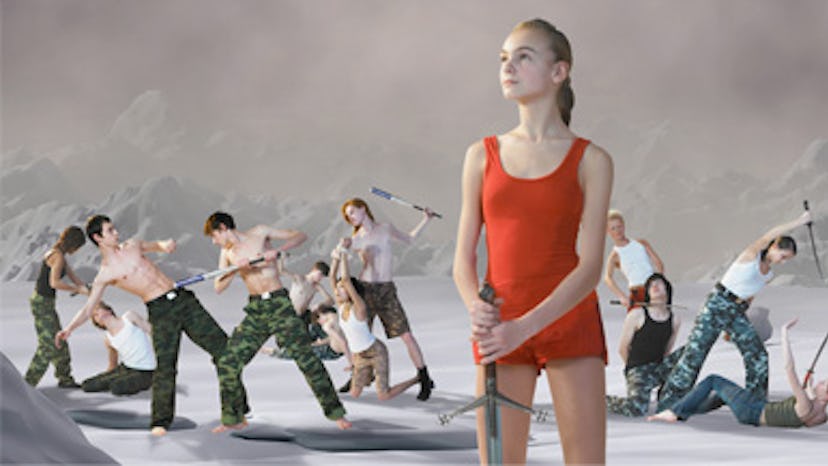MONANISM Opens Tasmania’s MONA
W’s pre-opening coverage of Tasmania’s Museum of Old and New Art (MONA) outlined owner David Walsh’s offbeat approach to exhibiting art. Not content to settle for a conventional space, Walsh installed a palpable sense of...

W’s pre-opening coverage of Tasmania’s Museum of Old and New Art (MONA) outlined owner David Walsh’s offbeat approach to exhibiting art. Not content to settle for a conventional space, Walsh installed a palpable sense of melodrama and mystery in the museum’s interior design and architecture, where quasi-kitsch red curtains and dim lighting combine to create a Lynchian ambience. For those able to make the epic journey to Hobart, here is a list of highlights from the opening show, MONANISM, on display until July 19th—all fit Walsh’s interest in the shadow side of life.
Moscow-based collective AES + F’s epic animation charts the collapse of history. The 19:25 minute video implodes past, present and future, engineering an apocalyptic panorama in which beautifully-choreographed youth commit slow-motion violence against a background of structural decline.
Angus’ massive, ‘life-size’ Mack truck is parked, incongruously, inside a narrow corridor – his playful use of scale and surprise jolts visitors into an awareness of the possibility of the impossible.
No one can accuse Walsh of lacking a sense of humor. His commentary on the piece (accessible via the handheld digital “O” interface) reveals his own ambiguous relationship to Hirst, and to the piece. His observation about the work, one of the artist’s often-derided, yet-still-unbelievably-expensive ‘spin’ paintings, is more interesting than the painting itself.
One of the few works in the show that could be described as cute—Wurm gives voice to what resembles an oversized, oddly adorable claymation house come to life, who muses, somewhat irritatingly, about its existential state.
A crowd pleaser, this sculpture “translates” a seemingly random selection of words culled from the internet into drops of water, functioning, in the artist’s words, as a “metaphor for the incessant flood of information we are exposed to.”
In her portrait of transgender photographer, Del LaGrace Volcano, Saville’s style melds the grotesque with the disquietingly sensual, painting a topographic map of an unconventional subject’s body.
Cast in dark chocolate, this sculpture serves up the remnants of a suicide bomber, entrails and all, suggesting that our boundaries against the unthinkable, as in, say, cannibalism, or perhaps mass murder, are anything but inviolable.